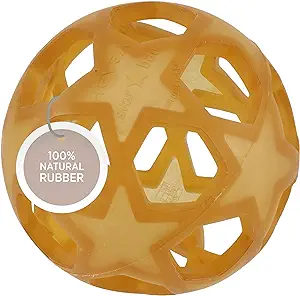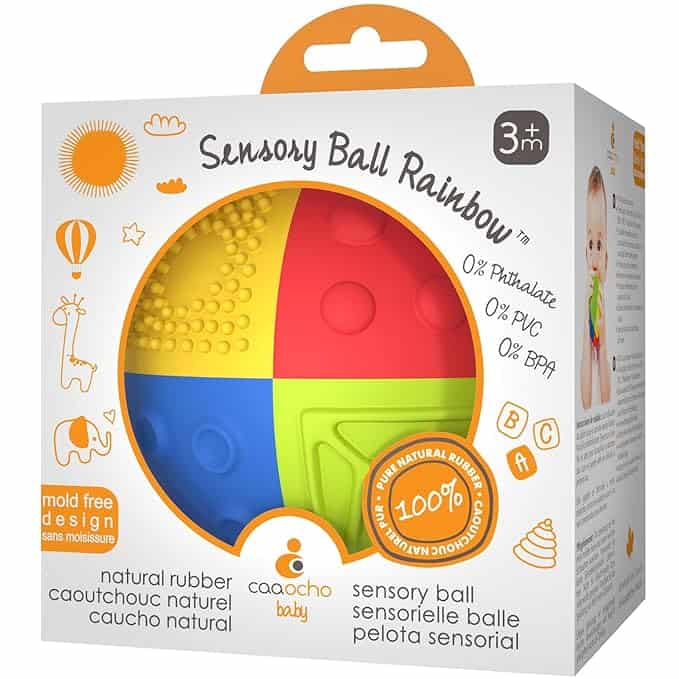Deciding what toys to buy for your baby can feel overwhelming especially if you are a first-time mom. Balls are a great basic first toy that can build your child’s motor skills and balance. So, non-toxic balls for babies? Let’s see what we can find!
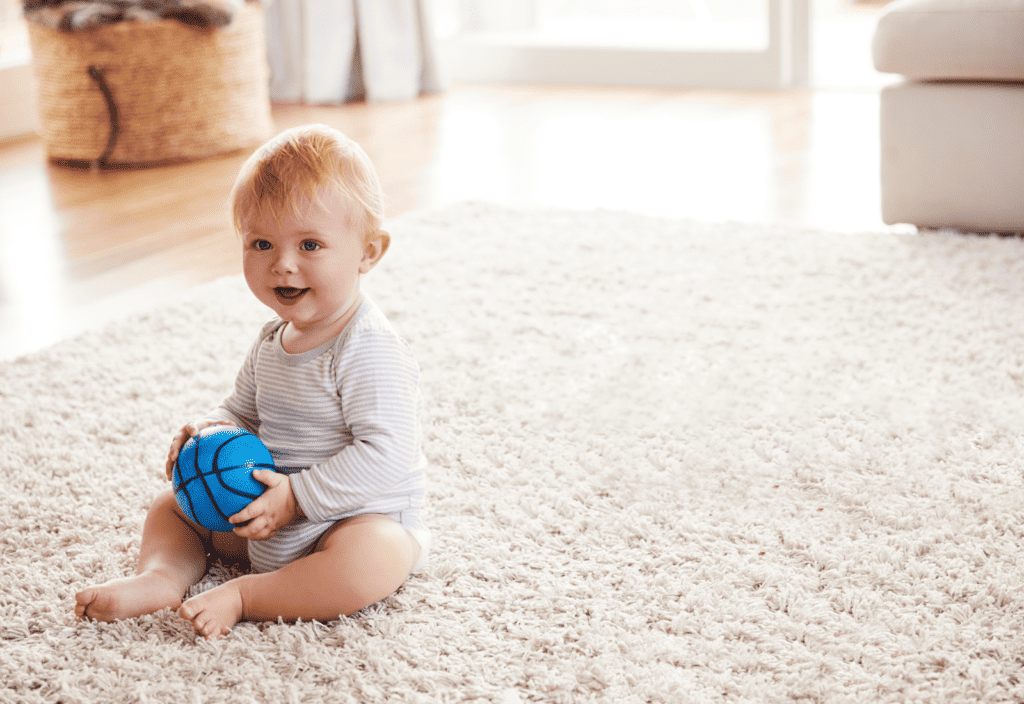
It’s a bit disheartening when you realize how manufacturing works and how we trade convenience for safety much of the time. This was something I never gave any thought to until I became pregnant. Like many people, I didn’t know about fabric, textiles or manufacturing processes at all.
Some days I long for that ignorant bliss, ha!
My first child got a lot of typical baby toys. I don’t even remember researching pacifiers the first go around. I do remember researching a lot about baby toys with my second. Luckily the options have at least quadrupled since my time of researching safe baby toys, so safe baby toys are much easier to find!
Toxins to Avoid in Baby Toys
Bisphenols (BPA and BPS)
BPA is one of the first plastic toxins that I remember learning about. BPA and BPS are two types of bisphenols. Bisphenols are used to harden plastic. BPS has been around even over a hundred years and BPA has been around over 50 years. BPA is often found in plastics and is linked to a whole host of health concerns.
Ironically, BPS may not be any safer than BPA. You can read the details in this journal article published in Endocrinology.
According to the Mayo Clinic, “Exposure to BPA is a concern because of the possible health effects on the brain and prostate gland of fetuses, infants and children. It can also affect children’s behavior. Additional research suggests a possible link between BPA and increased blood pressure, type 2 diabetes and cardiovascular disease.”
BPS began to be used as an alternative to BPA about a decade ago when concerns about BPA grew stronger. So, that BPA free item, may have BPS in it, which is likely not any safer. The EU (European Union) has worked hard to ban and restrict the use of Bisphenols by banning it in food containers and some items related to childcare for many years now.
The U.S. does not have any restrictions on the use of BPA and BPS, so it’s up to the consumer if you wish to avoid the ingredients.
Phthalates
Phthalates are a group of chemicals used to make plastics more durable often called plasticizers. The Consumer Product Safety Commission has banned the use of some phthalates in certain items. final rule bans children’s toys and childcare items containing more than 0.1 percent of five specific phthalate chemicals.
The restriction came from the recommendation of the Chronic Hazard Advisory Panel (CHAP), which determined that five phthalate chemicals cause harmful effects on male reproductive development: diisononyl phthalate (DINP), di-n-pentyl phthalate (DPENP), di-n-hexyl phthalate (DHEXP), dicyclohexyl phthalate (DCHP) and diisobutyl phthalate (DIBP).
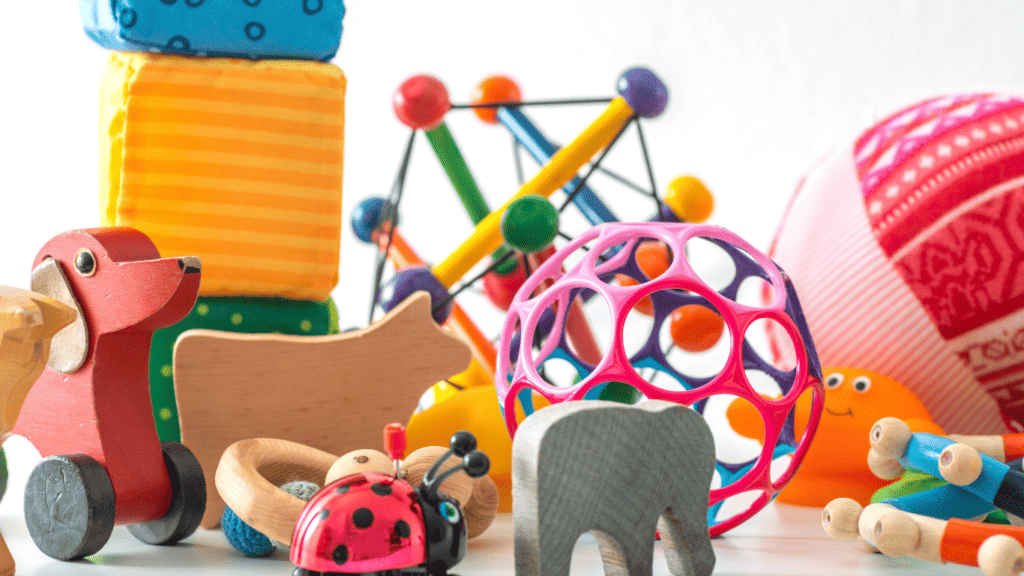
Three more phthalates were added later on: di-(2-ethylhexyl) phthalate (DEHP), dibutyl phthalate (DBP) and benzyl butyl phthalate (BBP). While this is a helpful restriction, there are still many more allowed Phthalates that may be concerning.
Polyvinyl Chloride (PVC)
Flexible toys often contain PVC, because it is easy and cheap to source. An essential component of PVC, vinyl chloride, is a known human carcinogen linked to various cancers. PVC contains dangerous chemical additives including phthalates, lead and cadmium, which are best avoided especially by children.
PVC is most toxic during the manufacturing process and when exposed to fire. When heated, PVC release two toxic substances, hydrogen chloride and dioxin, according to the International Association of Certified Home Inspectors. Dioxin may be one of the most toxic man-made carcinogens in existence, and PVC is the largest contributor to the world’s dioxin burden.
Yes, this is the same PVC that is used in plumbing, and it’s not completely safe there either. While you can easily debate its use in plumbing and building materials, it’s a bit harder to justify its use in baby toys and similar.
Now, that we’ve covered why you don’t want just any cheap plastic toys for your children, let’s move on to what materials make the best non-toxic balls for baby.
Toy Certifications
Toys sold in the U.S. that are intended for children under 12 are required to undergo safety testing under the ASTM F963-17. Other toy certifications include CE (European Union toys standard EN71), CHPA (Canadian market toys standard) and ISO (Australian market toys).
It is important to look for these safety certifications when shopping for baby toys. I would not assume every toy sold on Amazon meets safety standards.
Safest Materials for Baby Toys
Natural fibers are always excellent choices like cotton, jute, hemp and natural rubber. Silicone, which is often found in kitchen assessories like spatulas and baking molds, is a nice synthetic choice as is thermoplastic polyurethane (TPU).
Non-Toxic Balls for Babies
Hevea Natural Rubber Ball
The Nevea Natural Rubber Ball contains 100% natural rubber. The ball is free of BPA, PVC and phthalates, making it safe for baby to chew on when teething. Hevea is a Danish company, and “Hevea” is the Latin name for the rubber tree, Hevea Brasiliensis, which is the main component in Hevea’s products.
The company origin is noteworthy because it is incredibly hard to find bouncy balls that are not made in China. If that is a requirement for you then the Hevea is the ball for you!
The only other bouncy ball option I could find that is not made in China, are wool dryer balls, which would actually be quite enjoyable for babies and toddlers. However, wool dryer balls would not fare well outside.
Crocodile Creek Rubber Ball
All Crocodile Creek balls have a suggested use for children ages three and up, but I feel like most toddlers could manage this 5-inch ball just fine. These rubber balls (natural and synthetic) are free of PVC, BPA and vinyl. These balls come in really bright fun designs.
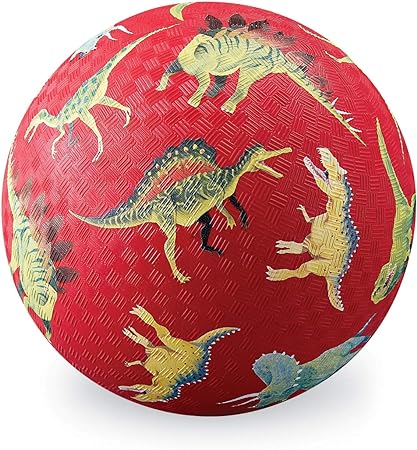
Caaocho Pure Natural Rubber Sensory Ball
Caaocho has several ball and teether options available on Amazon. The Caaocho natural rubber sensory ball contains 100% pure, natural rubber. They are free of BPA, PVC, phthalate and nitrosamine with a food-grade paint coating.
This particular ball is 3′ in diameter.
Fat Brain Toys Sensory Rollers
These 2.5-inch sensory rollers are great for even young babies into toddlerhood. These balls are crafted from food grade silicone and are dishwasher safe. The balls come in a 3-pack and are the smallest of the options in this post.
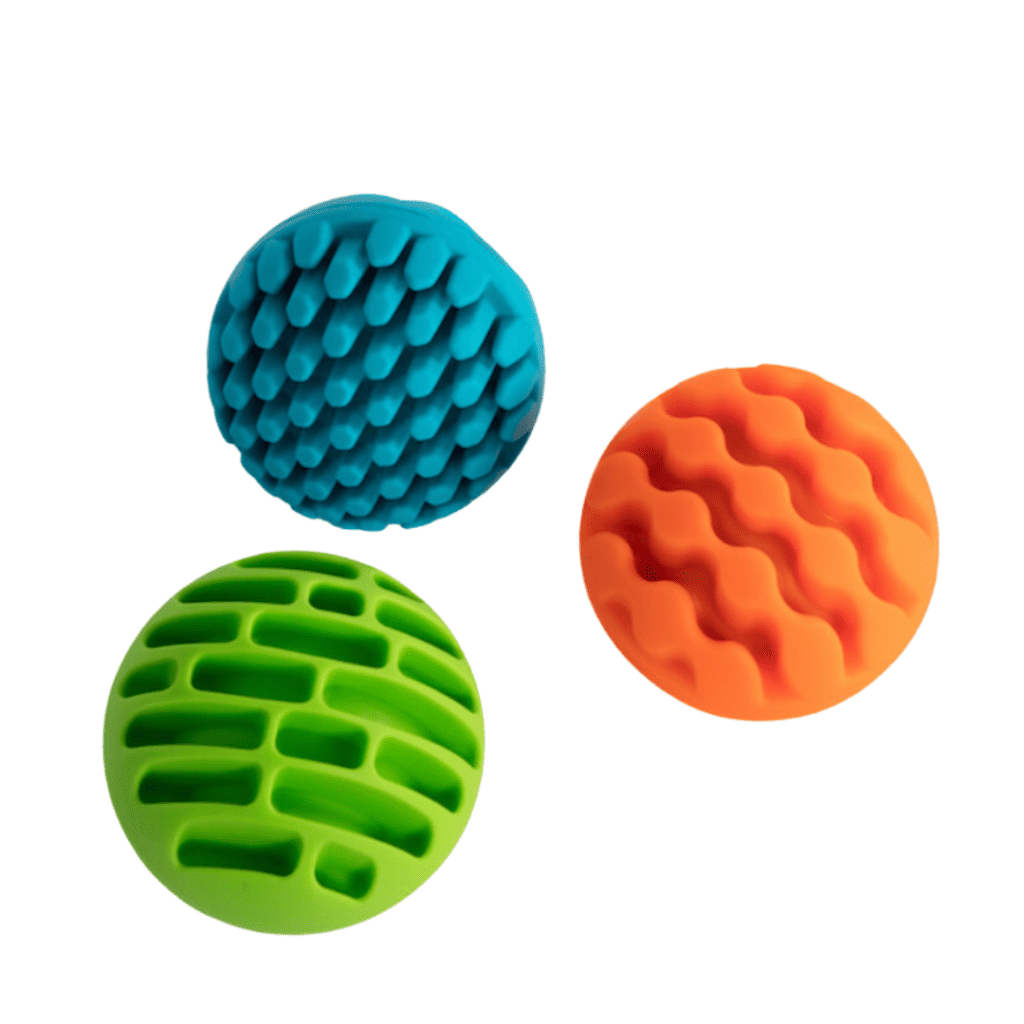
Conclusion
Hopefully, some of these non-toxic balls for babies and toddlers were what you were looking for. It’s been a few years, since baby toys were on my agenda, so feel free to let me know what non-toxic baby toy brands I need to know about. As always, thanks for stopping by!
